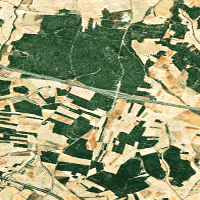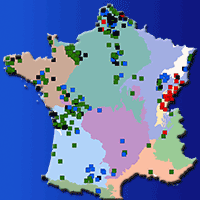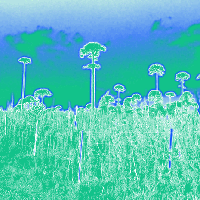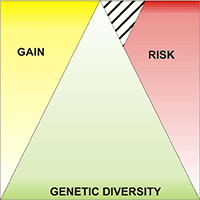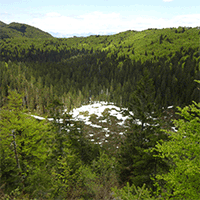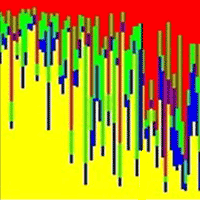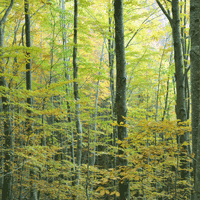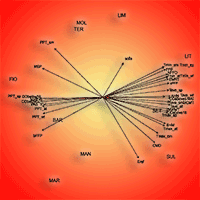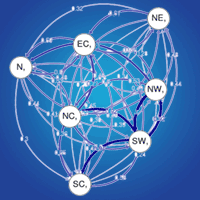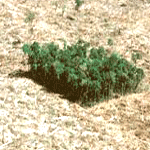
Landscape genetics of fragmented forests: anticipating climate change by facilitating migration
MJM Smulders (1) , MMP Cobben (1), P Arens (1), J Verboom (2)
iForest - Biogeosciences and Forestry, Volume 2, Issue 4, Pages 128-132 (2009)
doi: https://doi.org/10.3832/ifor0505-002
Published: Jul 30, 2009 - Copyright © 2009 SISEF
Review Papers
Collection/Special Issue: EFI 2008 Annual Conference Week - Orvieto (Italy)
Adaptation of Forest Landscape to Environmental Changes
Guest Editors: Giuseppe Scarascia Mugnozza (CRA - Rome, Italy)
Abstract
Habitat fragmentation is a threat to the survival of species and causes population decline, as isolated populations are more susceptible to demographic and genetic stochasticity. This can be compensated for by sufficient spatial connectivity between habitat patches to allow dispersal of individuals among populations. In that case such a network of populations may effectively form a metapopulation. In this paper we discuss some aspects of metapopulation theory, notably with respect to maintaining genetic diversity in fragmented forest patches. In addition we will discuss recent studies that explore ways for forest management to anticipate and mitigate the expected climate change, in relation to range shifts and colonisation opportunities.
Keywords
Genetic diversity, Management, Connectivity, Habitat fragmentation
Authors’ Info
Authors’ address
MMP Cobben
P Arens
Plant Research International, Wageningen UR, Wageningen (The Netherlands)
Alterra, Wageningen UR, Wageningen (The Netherlands)
Corresponding author
Paper Info
Citation
Smulders MJM, Cobben MMP, Arens P, Verboom J (2009). Landscape genetics of fragmented forests: anticipating climate change by facilitating migration. iForest 2: 128-132. - doi: 10.3832/ifor0505-002
Academic Editor
Marco Borghetti
Paper history
Received: Apr 08, 2009
Accepted: Apr 09, 2009
First online: Jul 30, 2009
Publication Date: Jul 30, 2009
Publication Time: 3.73 months
Copyright Information
© SISEF - The Italian Society of Silviculture and Forest Ecology 2009
Open Access
This article is distributed under the terms of the Creative Commons Attribution-Non Commercial 4.0 International (https://creativecommons.org/licenses/by-nc/4.0/), which permits unrestricted use, distribution, and reproduction in any medium, provided you give appropriate credit to the original author(s) and the source, provide a link to the Creative Commons license, and indicate if changes were made.
Web Metrics
Breakdown by View Type
Article Usage
Total Article Views: 54257
(from publication date up to now)
Breakdown by View Type
HTML Page Views: 44707
Abstract Page Views: 4089
PDF Downloads: 4418
Citation/Reference Downloads: 86
XML Downloads: 957
Web Metrics
Days since publication: 5982
Overall contacts: 54257
Avg. contacts per week: 63.49
Citation Metrics
Article Citations
Article citations are based on data periodically collected from the Clarivate Web of Science web site
(last update: Mar 2025)
Total number of cites (since 2009): 11
Average cites per year: 0.65
Publication Metrics
by Dimensions ©
Articles citing this article
List of the papers citing this article based on CrossRef Cited-by.
References
Bridging the gap between ecophysiological and genetic knowledge to assess the adaptive potential of European beech. Ecological Modelling 216: 333-353.
CrossRef | Gscholar
How well can existing forests withstand climate change? In: “Climate change and forest genetic diversity: Implications for sustainable forest management in Europe” (Koskela, J, Buck, A, Teissier du Cros E eds). Bioversity International, Rome, Italy, pp. 3-17.
Gscholar
Extinction. In: “some mathematical problems in biology” (Gesternhaber M ed.). American Mathematical Society, Providence, Rhode Island, USA, pp. 77-107.
Gscholar
Immediate genetic changes in tree deployment and breeding because of global warming. In: “International conference on adaptation of forests and forest management to changing climate with emphasis on forest health: a review of science, policies and practices”. Umea (Sweden) 25-28 August, 2008. Book of Abstracts and Preliminary Programme, pp. 147.
Online | Gscholar
How to adapt forest management in response to the challenges of climate change? In: “Climate change and forest genetic diversity: implications for sustainable forest management in Europe” (Koskela J, Buck A, Teissier du Cros E eds). Bioversity International, Rome, Italy. pp. 31-42.
Gscholar
What do field trials tell about the future use of forest reproductive material? In: “Climate change and forest genetic diversity: implications for sustainable forest management in Europe” (Koskela J, Buck A, Teissier du Cros E eds). Bioversity International, Rome, Italy, pp.53-69.
Gscholar
Adaptation of forest trees to climate change. In: “Climate change and forest genetic diversity: implications for sustainable forest management in Europe” (Koskela J, Buck A, Teissier du Cros E eds). Bioversity International, Rome, Italy, pp. 19-30.
Online | Gscholar
Metapopulation dynamics under climate change: will species be able to track? (submitted).
Gscholar
Structure of the genetic diversity in Black poplar (Populus nigra L.) populations across European river systems: consequences for conservation and restoration. Forest Ecology and Management 255: 1388-1399.
CrossRef | Gscholar
Natural hybridization between Populus nigra L. and P. x canadensis Moench. Hybrid offspring competes for niches along the Rhine river in the Netherlands. Tree Genetics and Genomes 4: 663-675.
CrossRef | Gscholar

